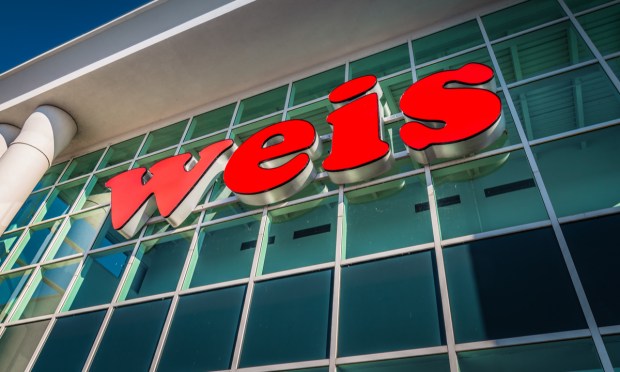Grocers Tap Contextual Commerce in Bid to Grow Digital Engagement

This week in grocery, Weis Markets and The Fresh Market leverage contextual commerce to drive loyalty and engagement, Dollar General looks to expand its produce selection, and Target expands its private-label food selection.
Weis Markets, a grocery chain with nearly 200 East Coast locations, is looking to drive rewards membership by offering free virtual cooking classes. The company shared via its newsletter Aug. 25 that it is offering free virtual cooking classes for rewards card holders throughout September, incentivizing participation with $5 coupons for attendees.
The move comes as grocers look to create more value for loyalty members in an effort to maintain engagement, as delivery platforms such as Instacart expand consumers’ options, escalating the competition.
Similarly, The Fresh Market is also using culinary content to drive digital engagement. The grocer, which has 159 locations across 22 states, recently announced a sponsorship of culinary personality Vera Stewart’s “The VeryVera Show,” which includes Stewart hosting a shoppable livestream for the grocer.
The merchant’s livestreams direct consumers to its eCommerce delivery and curbside pickup channels and to the option to build a virtual shopping list, encouraging digital sales as grocers look to boost digital adoption.
In fact, according to data from “Tracking the Digital Payments Takeover: Catching the Coming eCommerce Wave,” created in collaboration with Amazon Web Services (AWS), which drew from an April survey of nearly 2,700 U.S. consumers, only 12% of grocery orders are fulfilled digitally. Yet these are higher-value sales, with consumers spending 32% more on their average grocery order made online than on purchases made in stores ($116 versus $88).
Dollar General Looks to Drive Produce Sales as Consumers Trade Down
Dollar General is seizing on consumers’ demand for lower-priced groceries by expanding its selection of fruits and vegetables.
On a call with analysts Thursday (Aug. 31) discussing the company’s second quarter fiscal 2023 financial results, Dollar General CEO Jeff Owen noted that the retailer is looking to add these products to new locations.
“With regard to remodels, approximately 80% will be in our DGTP [Dollar General Traditional Plus] format, which provides the opportunity for a significant increase in cooler count as well as the ability to add fresh produce to many stores,” Owen said.
Indeed, consumers are looking for less expensive grocery options. Research from the May edition of PYMNTS’ Consumer Inflation Sentiment series, “Consumer Inflation Sentiment Report: Consumers Cut Back by Trading Down,” which draws from a survey of more than 2,000 U.S. consumers in April, revealed that 29% of grocery shoppers have switched to sellers that offer better prices on fruits and vegetables, and 47% have switched to cheaper merchants for at least one grocery product.
Dollar General, for its part, had produce available at 4,400 locations at the end of the quarter with plans to expand this offering to reach 5,000 locations by the year’s end, with a focus on rural markets.
“While produce is not currently serviced by our internal supply chain, we continue to believe that DG Fresh provides a potential path forward to expanding our produce offering to more than 10,000 stores over time,” Owen said. “We know this offering is important to customers, especially in rural areas.”
Target Expands Private-Label Grocery Selection
As consumers seek these less expensive options, Target has noted strength in its private-label grocery brands, and in an effort to boost margins and loyalty, the retailer is expanding its presence in the space.
On Sunday (Aug. 27), USA Today reported that the retailer is adding more than 20 fall food items to its Good & Gather and Favorite Day brands.
On the retailer’s earnings call earlier this month, Christina Hennington, Target’s executive vice president, chief growth officer, spoke to the strength of the company’s consumables and private-label businesses in the midst of customers’ inflationary challenges and other macroeconomic concerns.
“At the moment, given where the consumer is spending,” Hennington said, “we’re, of course, leaning on the strength of our food and beverage portfolio and essentials and beauty. … Our owned brand portfolio plays a huge role in delivering against those goals … and we’ve introduced a lot of newness.”
